
15 Q
5th - 7th
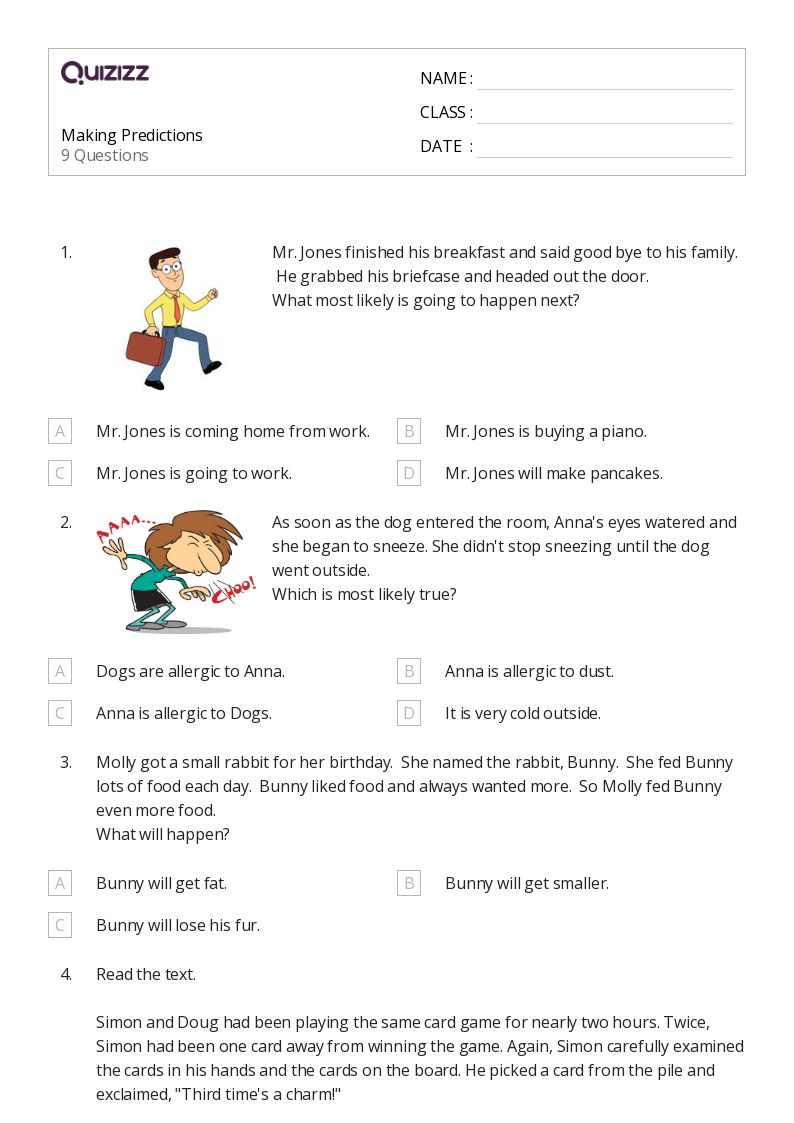
9 Q
6th - 8th
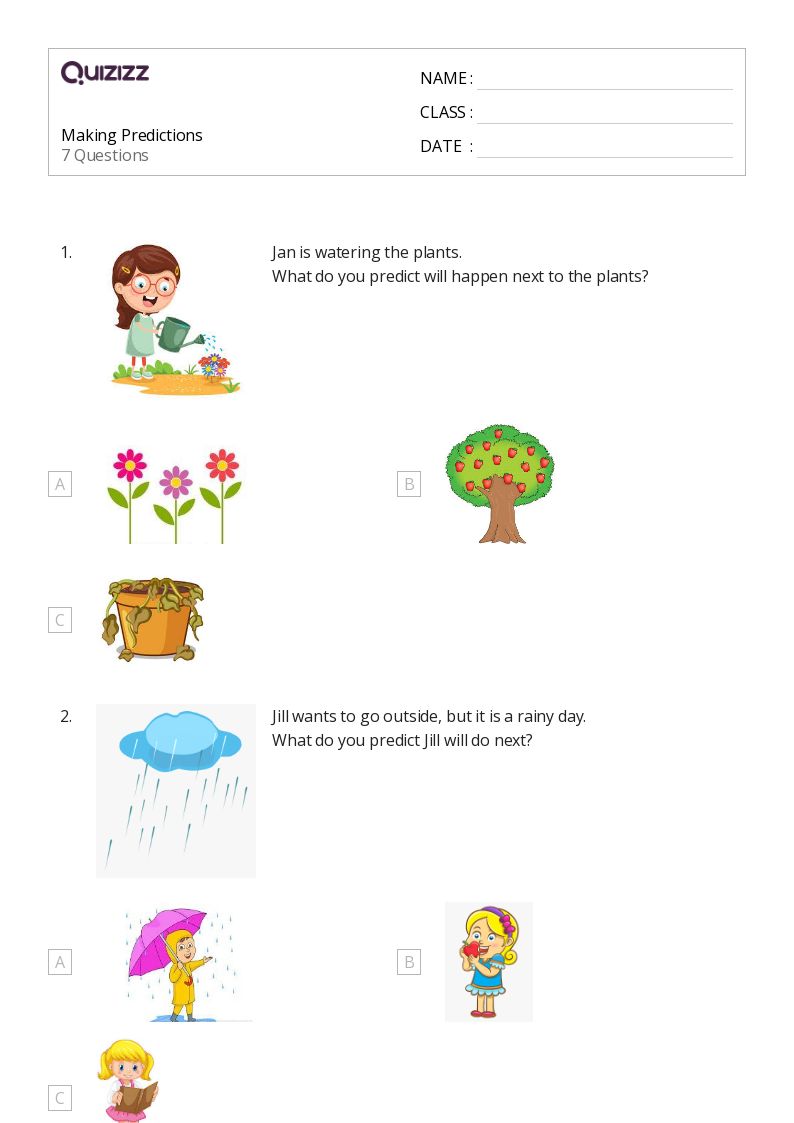
7 Q
1st

10 Q
3rd
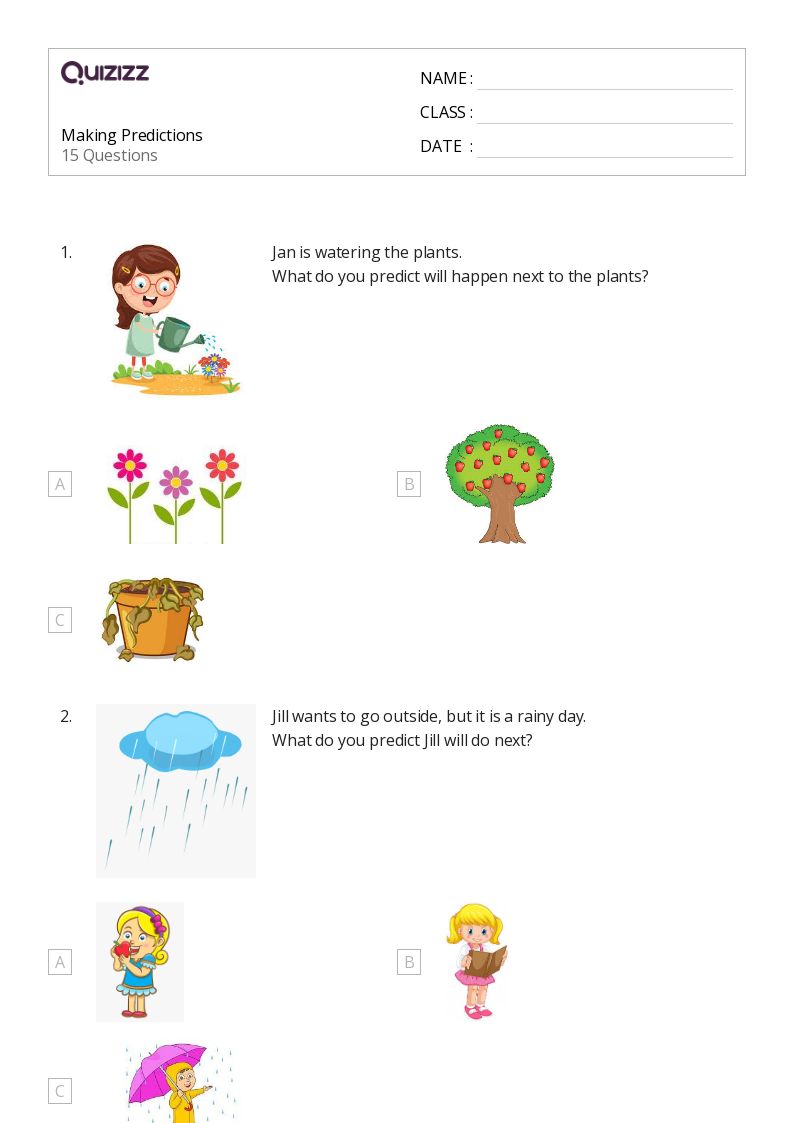
15 Q
1st
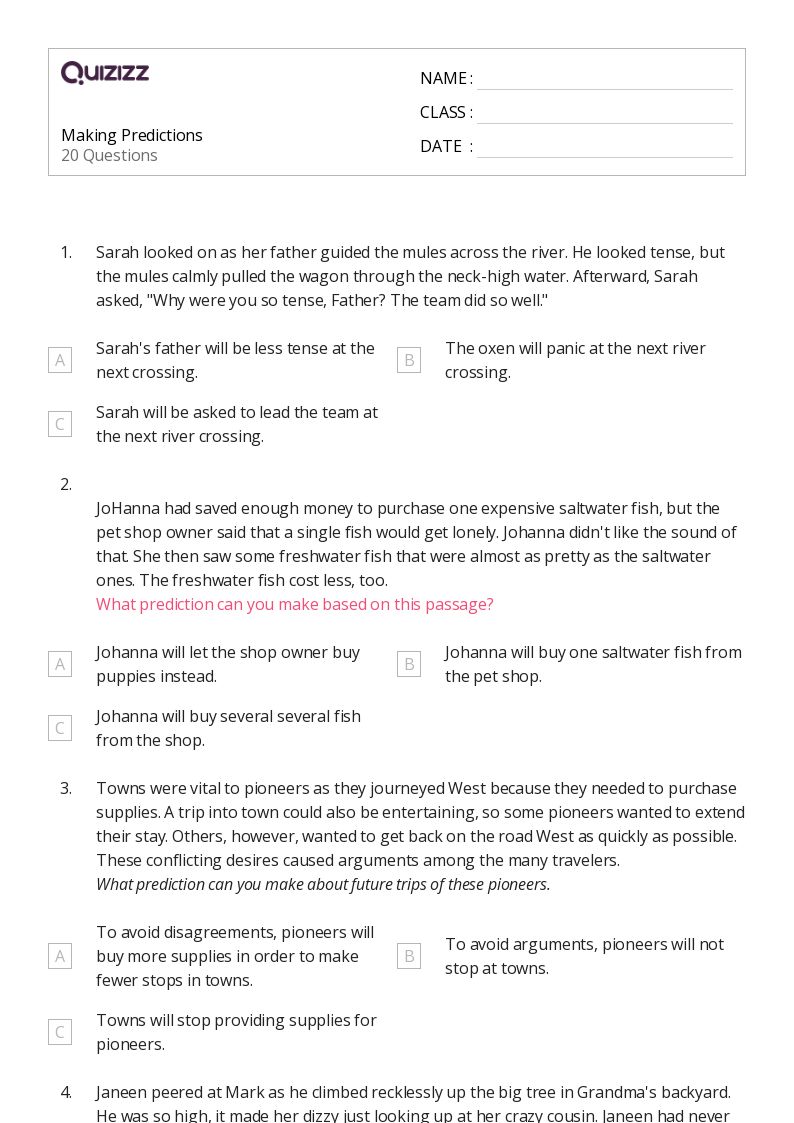
20 Q
6th - 8th

7 Q
3rd
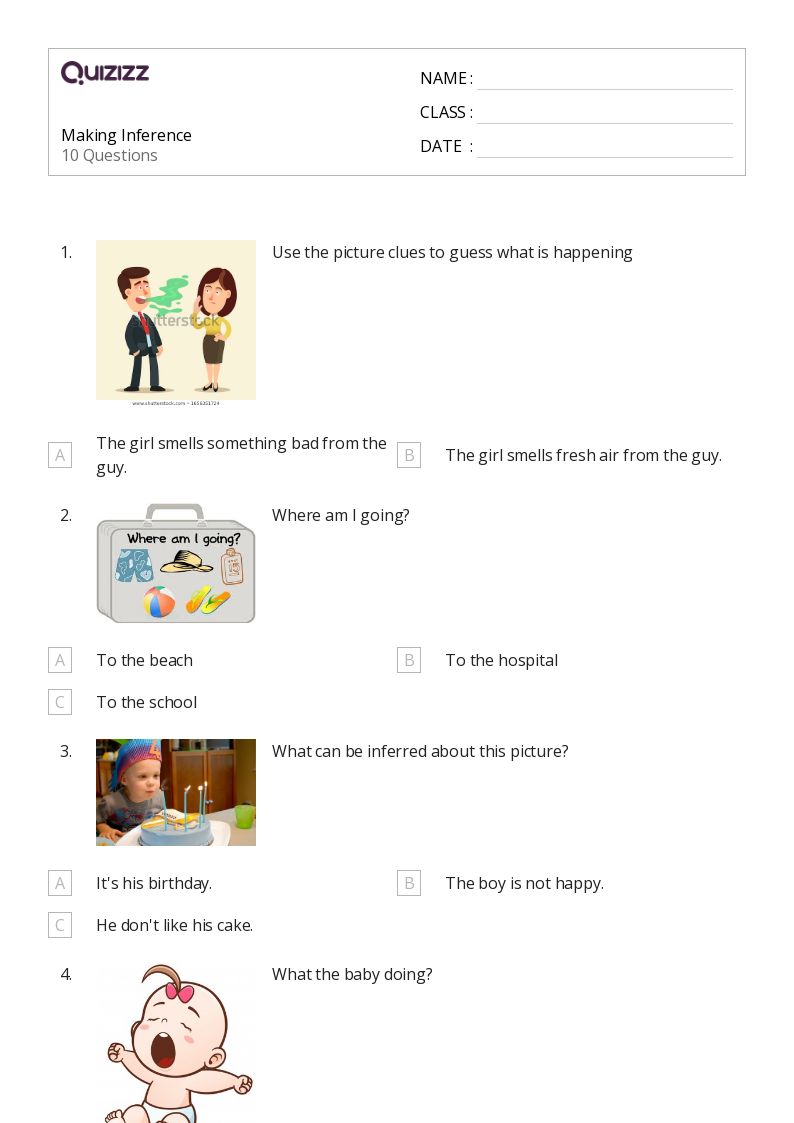
10 Q
KG - 1st

12 Q
5th - 6th
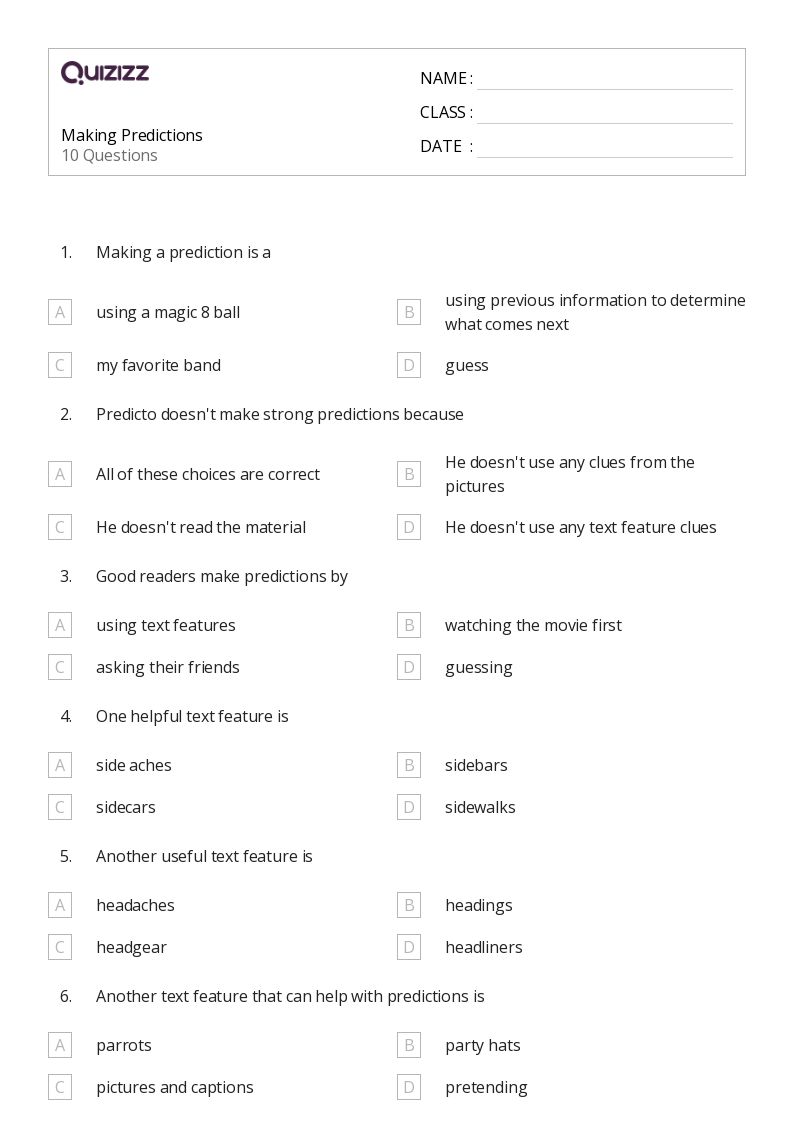
10 Q
4th - 6th

11 Q
3rd
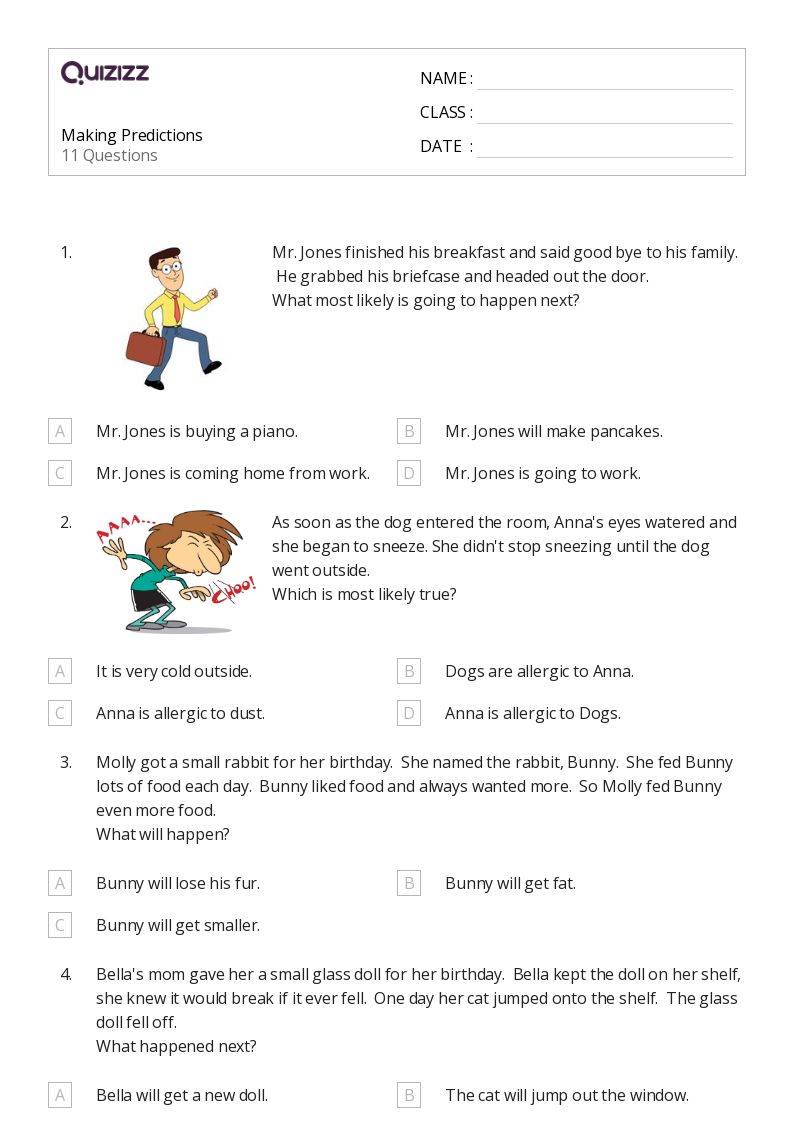
11 Q
7th - 8th

8 Q
7th

10 Q
1st
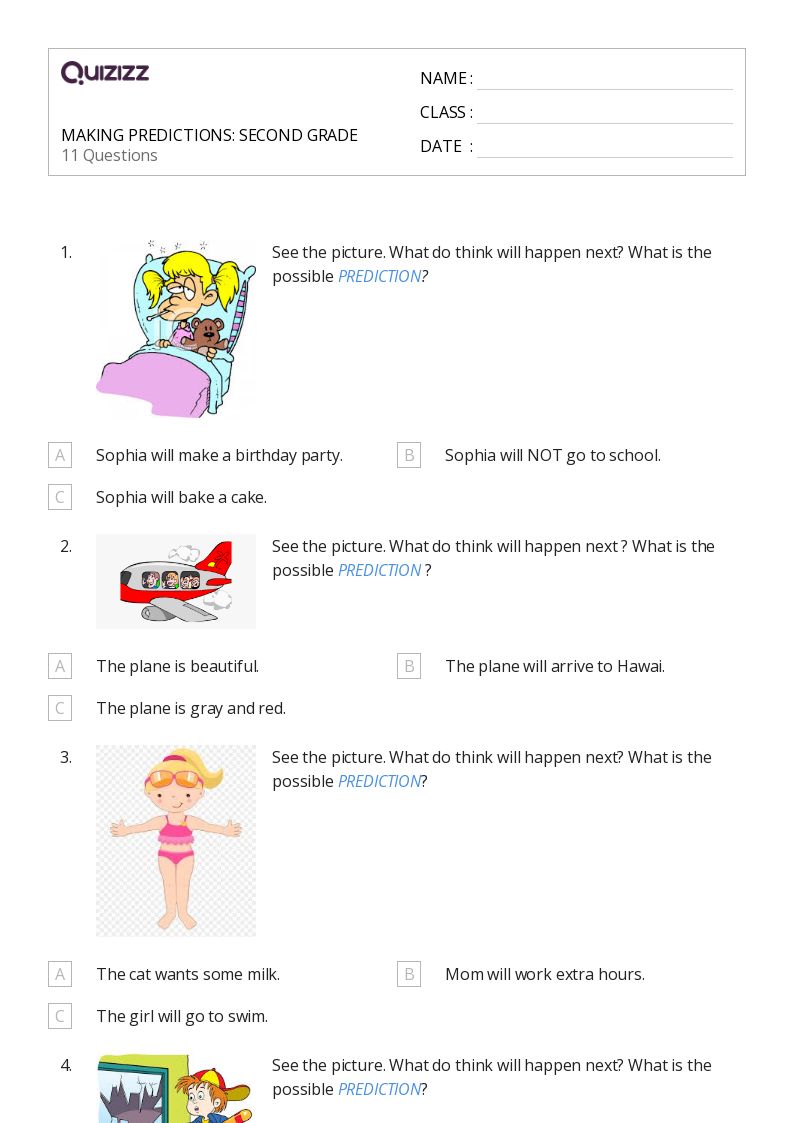
11 Q
2nd
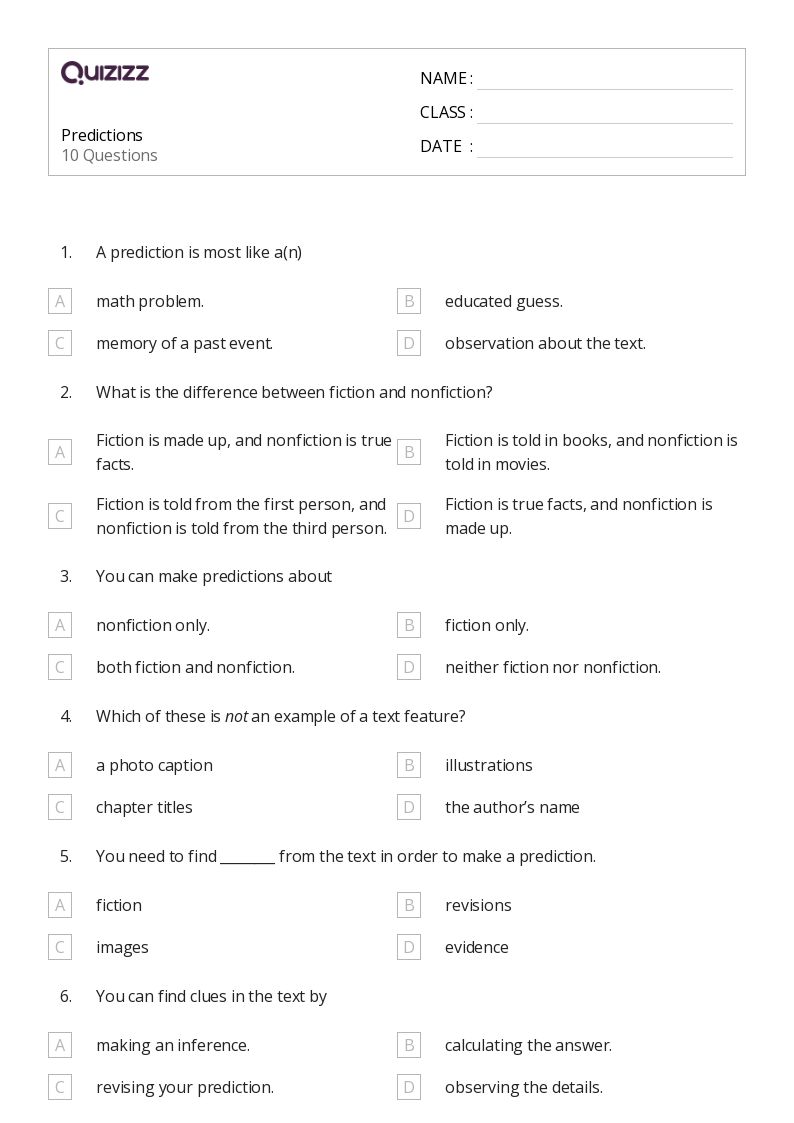
10 Q
2nd - 6th

7 Q
2nd - 3rd
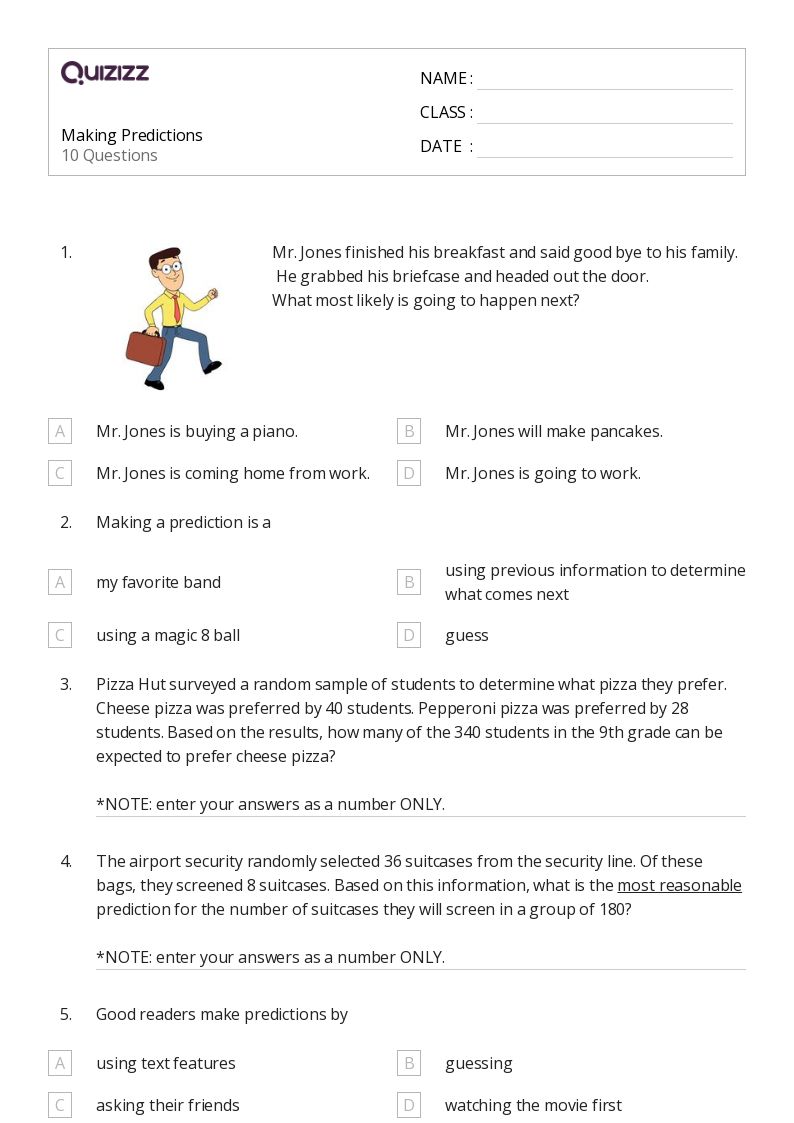
10 Q
5th - 7th

11 Q
8th
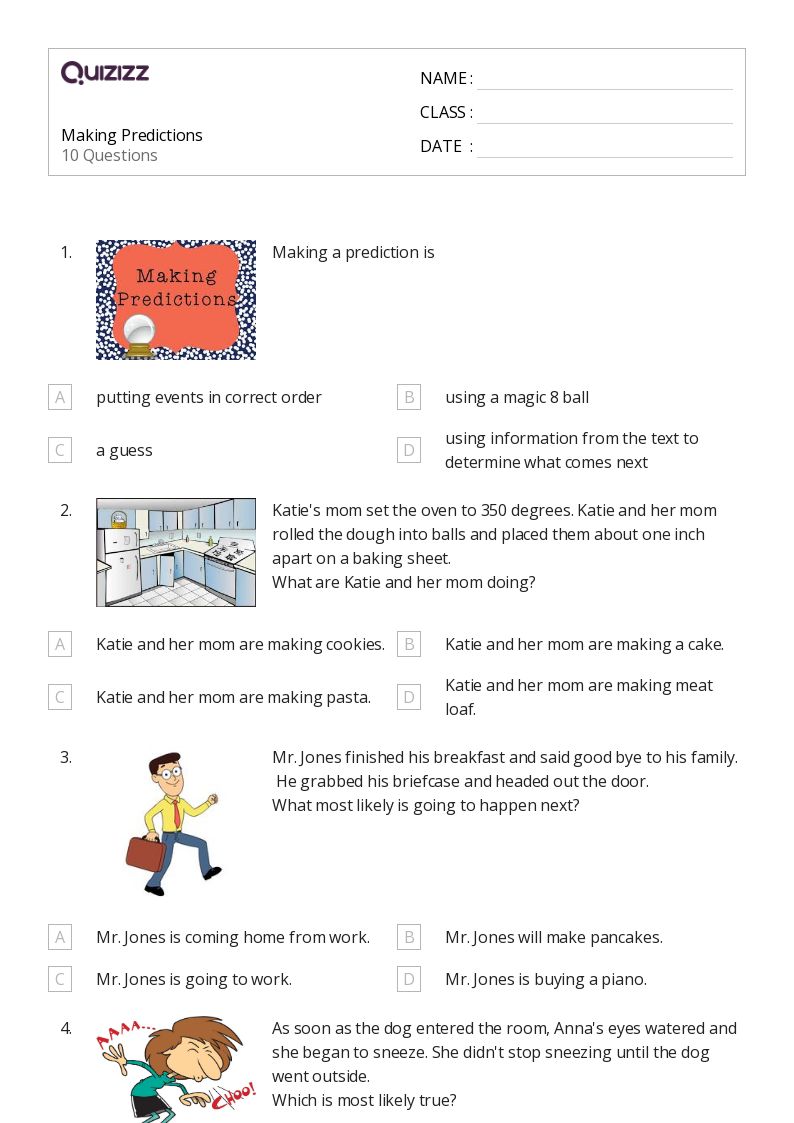
10 Q
4th - 5th

14 Q
8th
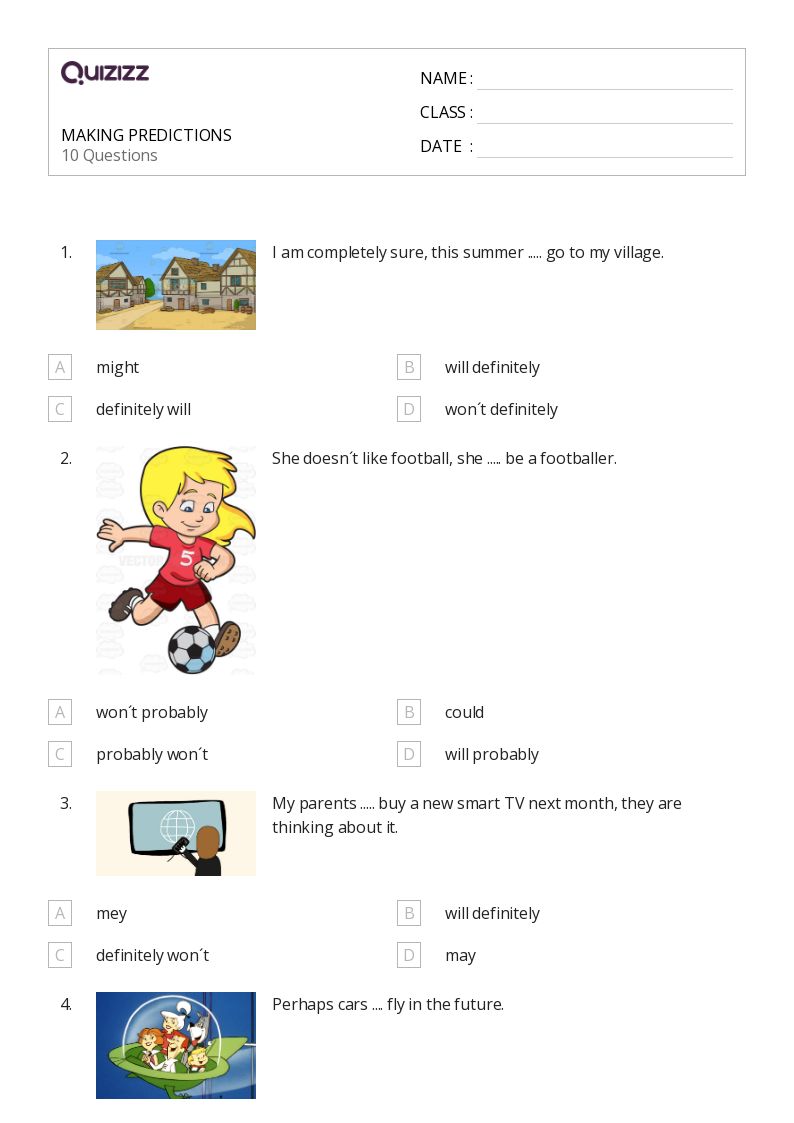
10 Q
6th
Explore Worksheets by Subjects
Explore printable Making Predictions in Fiction worksheets
Making Predictions in Fiction worksheets are an essential tool for teachers who want to help their students develop strong reading and writing skills. These worksheets focus on teaching students how to make educated guesses about what might happen next in a story, based on the information they have already read. By incorporating Reading Comprehension Strategies, such as making predictions, teachers can help their students become more engaged and active readers. This not only improves their overall reading abilities but also enhances their critical thinking and problem-solving skills. Reading & Writing go hand in hand, and using these worksheets in the classroom can help students better understand the connection between the two, ultimately leading to improved performance in both areas. Making Predictions in Fiction worksheets are a valuable resource for teachers looking to enhance their students' reading experience and foster a love for literature.
Quizizz is an excellent platform that offers a wide range of resources for teachers, including Making Predictions in Fiction worksheets. This interactive platform allows educators to create engaging quizzes and activities that help students practice their Reading & Writing skills while also incorporating Reading Comprehension Strategies, such as making predictions. Teachers can easily customize the content to suit their specific grade level and curriculum, ensuring that the material is both relevant and challenging for their students. Quizizz also provides valuable data and insights on student performance, allowing teachers to identify areas where students may need additional support or reinforcement. By integrating Quizizz into their lesson plans, educators can create a dynamic and interactive learning environment that promotes active reading and critical thinking, ultimately leading to improved academic outcomes for their students.
